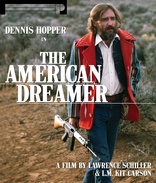The American Dreamer Blu-ray Movie
HomeThe American Dreamer Blu-ray Movie 
Blu-ray + DVDEtiquette Pictures | 1971 | 81 min | Not rated | Sep 22, 2015
Movie rating
6.3 | / 10 |
Blu-ray rating
| Users | 0.0 | |
| Reviewer | 3.5 | |
| Overall | 3.5 |
Overview
The American Dreamer (1971)
A documentary about actor/director Dennis Hopper, showing him at his home and studio putting together his film "The Last Movie."
Starring: Dennis Hopper, L.M. Kit Carson, Lois UrsoneDirector: L.M. Kit Carson, Lawrence Schiller
| Documentary | 100% |
Specifications
Video
Video codec: MPEG-4 AVC
Video resolution: 1080p
Aspect ratio: 1.34:1
Original aspect ratio: 1.37:1
Audio
English: DTS-HD Master Audio Mono (48kHz, 24-bit)
Subtitles
English SDH
Discs
50GB Blu-ray Disc
Two-disc set (1 BD, 1 DVD)
DVD copy
Playback
Region A, B (C untested)
Review
Rating summary
| Movie | 3.0 | |
| Video | 4.0 | |
| Audio | 3.0 | |
| Extras | 3.5 | |
| Overall | 3.5 |
The American Dreamer Blu-ray Movie Review
"Did you know that 'if' is the middle word in 'life'?"
Reviewed by Michael Reuben September 27, 2015When actor and director Dennis Hopper died in 2010 at the age of 74, he was probably best known for his maniacal villains in films both mainstream (Howard Payne in Speed) and arthouse (Frank Booth in Blue Velvet), as well as for supporting parts that often provided some of a film's most memorable moments (e.g., his famous confrontation with Chrisopher Walken in True Romance or his alcoholic father in Hoosiers). All of these roles followed a long exile from Hollywood after the disastrous 1971 project known, appropriately, as The Last Movie, a film that has been little seen for almost 35 years and that Hopper was still trying to have re-released at the time of his death. The Last Movie was a dream project for Hopper, much like Heaven's Gate for Michael Cimino or Apocalypse Now for Francis Coppola. After directing and co-starring in Easy Rider, the success of which baffled studio executives grasping for relevance in a rapidly changing culture, Hopper was given a million dollars by Universal and free rein to do whatever he wanted. After spending most of 1970 shooting in Peru, Hopper returned to the U.S. with hundreds of hours of footage, which he proceeded to edit for months on his ranch in Taos, New Mexico, while Universal kept pressing for a release date. The cut that Hopper delivered in April 1971 was a trippy, disjointed tale that no one could follow. It had something to do with a film crew making a Western in Peru, which inspires an indigenous tribe to make their own movie with fake equipment and real violence. Universal dumped The Last Movie into a few theaters to fulfill their contractual obligations, then shelved it. Even less seen was the documentary called The American Dreamer, which was shot by L.M. Kit Carson and Lawrence Schiller during the editing of The Last Movie. Exploiting a loophole in Hopper's contract with Universal, a newly formed company called EYR (or "Educational Youth Recreation") hoped to show American Dreamer strictly on college campuses, a market that EYR believed to have moneymaking potential in the era before home video. But EYR carelessly booked American Dreamer into a commercial theater for one of their college screenings, and Universal's lawyers pounced with a vengeance. The film became unavailable for years. Etiquette Pictures, the recently established arthouse affiliate of Vinegar Syndrome, has partnered with the Walker Art Center of Minneapolis to return this piece of cinema history to circulation. The challenging restoration efforts are discussed in the "Video" section.
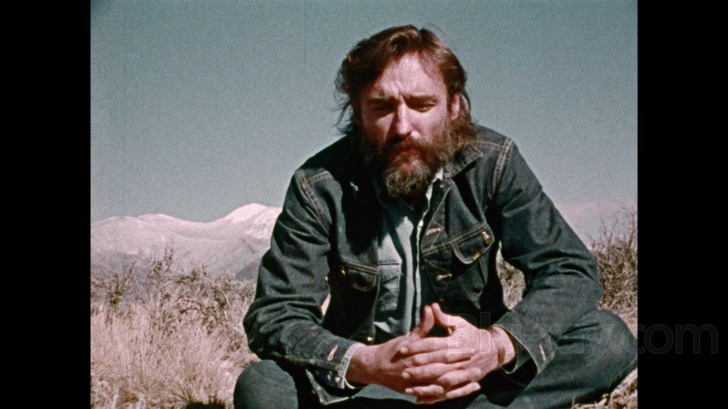
American Dreamer is not a traditional documentary. Indeed, co-director Schiller now argues (in the accompanying extras) that the film isn't a documentary at all, but some sort of meta-drama in which Dennis Hopper, as actor, has immersed himself into his persona as "Billy" from Easy Rider, in essence playing a character in Schiller's and Carson's movie at the same time he was completing his work as a director of The Last Movie. In this interpretation, American Dreamer becomes an extension of the hall of mirrors that Hopper was attempting to create with The Last Movie's fractured narrative blurring the line between filmmaking and reality. It's certainly true that the Dennis Hopper of American Dreamer far more resembles his character in Easy Rider than any of the actor's later roles, but there are obvious differences. The man who dominates the screen in American Dreamer has a more extensive vocabulary, a personal arsenal to defend himself against the kind of people who attacked Billy and Wyatt in Easy Rider, and a far grander sense of purpose than making dope deals and riding the open road. In appearance, Hopper often resembles a man out of time, a dazed refugee from some 19th Century gold rush who has somehow been transported forward a century. In manner, he radiates the crazed intensity of a cult leader (he speaks at one point about visiting Charles Manson in prison). He talks continuously. One of the few roles in which Hopper appeared during his long exile from the film industry was the photojournalist in Apocalypse Now, for which he improvised all his dialogue. Listening to him in American Dreamer, you can immediately recognize the seeds of that character's rambling speeches to Captain Willard. Whoever he was playing, Hopper was so much a method actor that, at least in his early career, he was always playing himself. In the extras, Schiller stresses his own inexperience as a documentary filmmaker, but he was a well-established photojournalist (and would later become a prolific director of TV docu-dramas, e.g., The Executioner's Song). He knew how to focus on the core of a story. Carson, who was an actor making his sole foray into directing, appears to have shared the same instinct. Their attention in American Dreamer remains fixed on Hopper, and they do not even bother to identify any of the other figures who pass in and out of his life at the ranch, most of them female and largely interchangeable. The editing jumps freely among scenes of Hopper being interviewed, editing The Last Movie, firing guns at targets, socializing with friends and cavorting with various women. Several sequences borrow the disorienting flash-cutting that Hopper used sporadically in Easy Rider and more extensively in The Last Movie. Especially at this distance in time, it can be difficult to tell whether this stylistic imitation represents a tribute to the film's star or an ironic comment by Schiller and Carson. (I suspect the former.) There is little question that Hopper, who seems to be perpetually stoned, was convinced during this time of both his own genius and the validity of his artistic vision. As a young actor, he had already established a reputation for being opinionated and rebellious, and the surprise triumph of his first directorial effort seemed to validate all of his anti-establishment instincts. The overconfidence that comes with overnight success is a familiar Tinseltown tale, but rarely has anyone captured with such raw immediacy the sense of an ego being inflated to the bursting point, of pride going before a fall. When a busload of women arrive at the ranch and surround Hopper attentively, he accepts their attention as the most natural thing in the world. Who the women are and why they are visiting is never made clear, although there's a suggestion that some of them may be Playboy Bunnies sent by a well-wisher. Hopper ends up naked in a bathtub with two of them, because those are the rewards of success—for as long as it lasts. Much of what makes American Dreamer a fascinating experience (and also an annoying and frustrating one) is watching an artist who had already proven his talent, and would eventually do so again, squander it in an orgy of self-indulgent navel-gazing. Then again, knowing that the story ends with the failure of The Last Movie and the collapse of Hopper's career, one has to wonder whether the process captured in American Dreamer wasn't essential to the mature work for which Hopper is best remembered today. His matchless explorations of furor, villainy, loss and grief are so memorable because of their intense authenticity. Could Hopper have achieved such depth of expression without himself having flown so high, only to fall so low? American Dreamer may present a portrait of the artist as a young megalomaniac, but maybe that was a necessary precursor to his becoming the performer we later grew to admire.
The American Dreamer Blu-ray Movie, Video Quality 
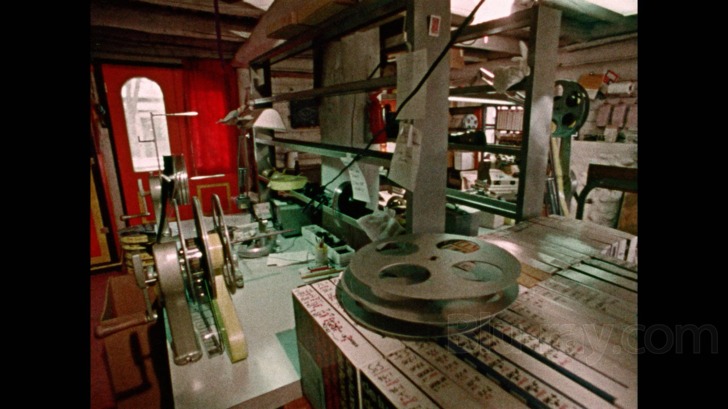
The American Dreamer was shot on 16mm film by co-director Lawrence Schiller and several additional camera operators. As explained in the restoration featurette included in the extras, the original negative was destroyed in a fire. The insert included with the Blu-ray/DVD set provides the following information about the restoration:
The American Dreamer was completely scanned & restored in the USA by Etiquette Pictures artists. The picture was scanned in 2k on an Arriscan, from the four remaining 16mm theatrical release prints. The raw scans were then edited together to create the best and most complete version possible. The film was then manually restored using the digital restoration suite PFClean. Color Grading was performed on DaVinci Resolve 11. The soundtrack was transferred on a Magna-Tech Sound Reproducer from the 16mm theatrical prints. The digital preservation master was approved by both Lawrence Schiller and L.M. Kit Carson. The final uncompressed picture & sound files are preserved for posterity on multiple LTO tapes.A few examples in the restoration featurette demonstrate how the image from the theatrical prints had to be re-colored because of age-related fading. Etiquette's 1080p, AVC-encoded Blu-ray has the appearance of a 35mm blowup release print of the 16mm original, after said release print has been in circulation for several weeks—which is to say that the image is reasonably detailed but seriously grainy, and significant print damage remains despite the restoration. Numerous vertical scratches run from top to bottom, and hairs and other flaws are sometimes visible, possibly dating back to the original photography. Still, the colors are remarkably strong for the 16mm film stocks of the period, and the restoration is free of obvious digital sharpening or grain reduction. American Dreamer was a seat-of-the-bell-bottoms project made years before anyone could even imagine the kind of miniature digital cameras available to documentary filmmakers today. Etiquette Pictures has made the most of the extant sources to present the film as a product of its era, and their efforts deserve high marks. Anyone questioning my high video score for this image should be prepared to explain why the Blu-ray image (from a master approved by the filmmakers) is not an accurate representation of the source. As an additional mark of Etiquette's commitment to the best possible presentation, American Dreamer has been mastered at an average bitrate of 34.46 Mbps, which is probably essential for preserving all the grain in the image without compression artifacts.
The American Dreamer Blu-ray Movie, Audio Quality 
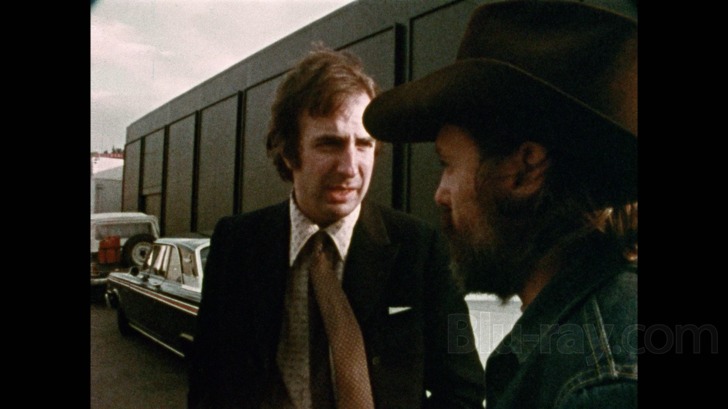
As described in the restoration notes quoted above, the Blu-ray's mono soundtrack has been taken from the theatrical prints. It is presented in lossless DTS-HD MA 1.0. Here, again, the limitations of the source must be considered. While the soundtrack is generally free of pops, clicks or crackling, a persistent hiss accompanies the entire film. It's the kind of background interference that the then-newly developed Dolby noise reduction was eliminating in professional studios but was almost certainly unavailable at the time on portable equipment available to crews like the one that shot American Dreamer. Still, as one's ear adjusts, the dialogue (or, more often, monologue by Hopper) is intelligible, and the style of the Sixties tunes sprinkled throughout the film is easily recognized. One can also make out the lyrics of Gene Clark's title song, "American Dreamer".
The American Dreamer Blu-ray Movie, Special Features and Extras 
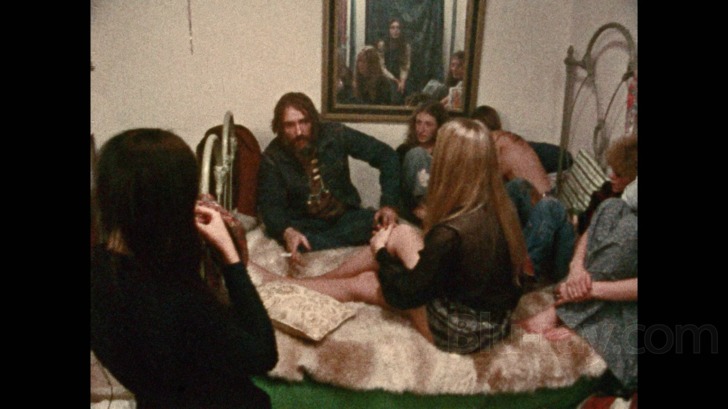
- "Fighting Against the Wind": Making The American Dreamer (1080p; 1.78:1; 29:40): This half-hour documentary covers both the making of American Dreamer and, to a lesser extent, The Last Movie. Lawrence Schiller describes how he and his late co-director, Kit Carson, developed the project with Hopper; Schiller is frank about their inexperience as documentarians. Hopper's then-agent, Michael Gruskoff, and producer Paul Lewis, discuss the challenges of both films, and co-star Julie Adams recalls working with Hopper on The Last Movie.
- "A Long Way Home": Preserving The American Dreamer (1080p; 1.78:1; 7:06): Schiller describes how the film's negative was lost and the process of restoration. Representatives of the Walker Art Center contribute to the latter discussion.
- Still Photograph Gallery Photos by Lawrence Schiller (1080p; various; 3:21): An animated slideshow.
- Booklet: In addition to technical information and credits for the restoration, the accompanying insert includes reproductions of ads promoting the release of The American Dreamer and an informative essay on the history of the film entitled "The American Dreamer and the Heyday of Campus Programming" by Chris Poggiali.
The American Dreamer Blu-ray Movie, Overall Score and Recommendation 
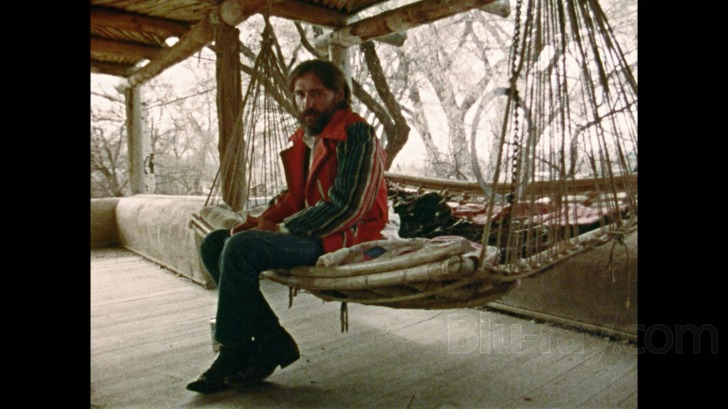
Even though The American Dreamer was made in 1971, it is tempting to regard the film as an artifact of the Sixties, in part because Easy Rider remains a cinematic landmark of the era. Certainly much of what Schiller and Carson captured with their cameras plays today like a string of Sixties cliches: the flower-power clothing and hairstyles, the hippie commune surroundings, the would-be guru spouting pseudo-profundities, the paranoia about the establishment. But eras are notoriously hard to define, and these phenomena say more about Dennis Hopper than about the time in which the film was made. Most people were living ordinary lives while the events filmed by Schiller and Carson were unfolding in the desert of New Mexico. I know I was. But then, most of us aren't American dreamers. Recommended.
Similar titles
Similar titles you might also like

Jodorowsky's Dune
2013

The Dog
2013

The Decline of Western Civilization
1981

Symbiopsychotaxiplasm: Take One
1968

Consenting Adults: A Study of Homosexuality
1967

Tongues Untied
1989

Stereo
Scanners bonus feature
1969

Scala!!!
Or, The Incredibly Strange Rise And Fall Of The World's Wildest Cinema And How It Influenced A Mixed-up Generation Of Weirdos And Misfits
2023

Taking Tiger Mountain
1983

Lost Soul: The Doomed Journey of Richard Stanley's Island of Dr. Moreau
House of Pain Edition
2014

Let Me Die a Woman
1977

Forbidden Love
Slipcover in Original Pressing
1992

Beauty Day
2011

For Madmen Only
For Madmen Only: The Stories of Del Close
2020

Harlan County U.S.A.
1976

Clapboard Jungle
2020

We Kill for Love
Slipcover in Original Pressing
2023

The Creeping Garden
Limited Edition
2014

I'm So Excited!
Los amantes pasajeros
2013

The Salt of the Earth
Le Sel de la Terre
2014
